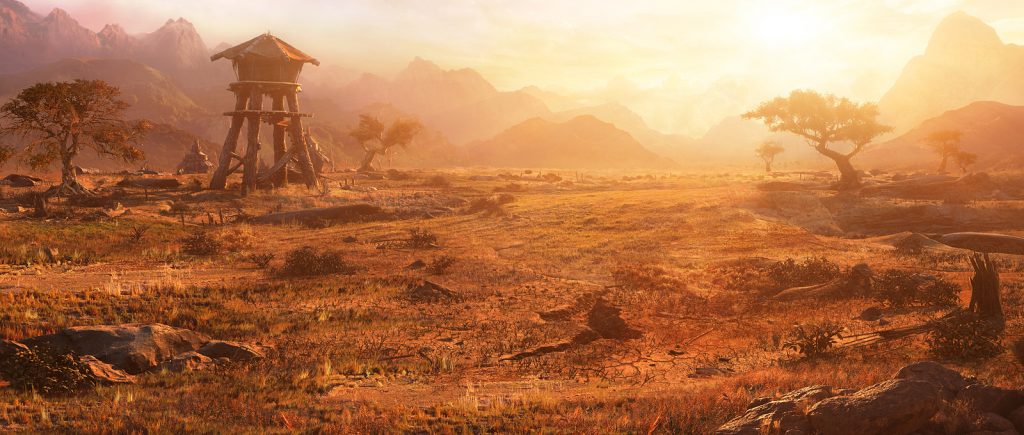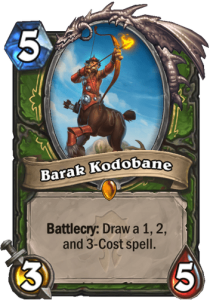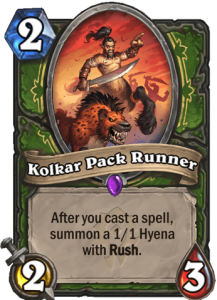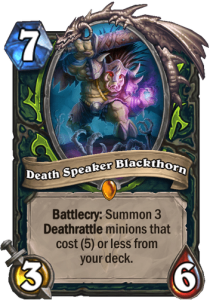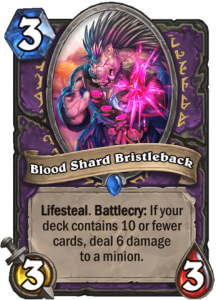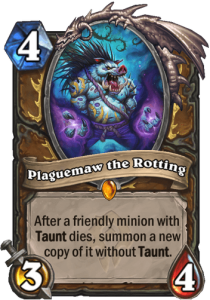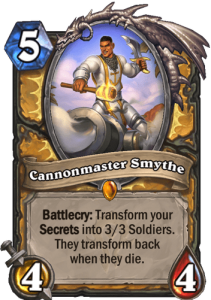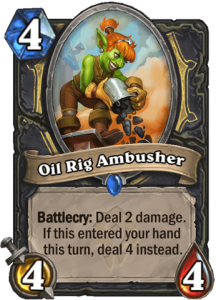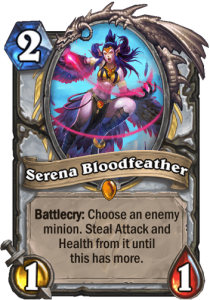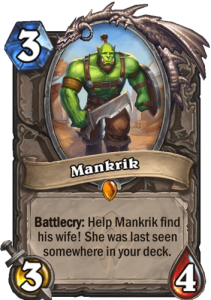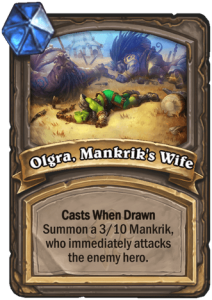It is 2021, and six years after the birth of Blizzard’s card game, the community eagerly awaits the release of Hearthstone’s single biggest content patch, 20.0, which also rings in the Year of the Gryphon as the game’s new Standard year.
The first expansion of that new Standard year, Forged in the Barrens, tells the story of Warcraft’s most essential conflict between Horde and Alliance. Just like the Year of the Phoenix, Hearthstone won’t feature a year-long narrative. However, we already learned that all three expansions storylines want to showcase the clash of cultures on Azeroth.
Forged in the Barrens centers on the Horde side of the faction war by setting up one of its most iconic zones in World of Warcraft, the Barrens. By the looks of the revealed cards so far, this set could turn out to become one of the truest Warcraft expansions of Hearthstone ever created.
But how did the drylands of the Barrens come about in the first place? Who lives there? And what significance does the Barrens zone hold in the big picture of Warcraft lore?
Once a Lush Forest
Over ten thousand years ago, Kalimdor, Azeroth’s “super-continent”, was shattered into pieces during a cataclysmic event known as the Sundering. This event was triggered by the destruction of the Well of Eternity, a life-giving scar of the world-soul Azeroth itself, which was created when the titan Aman’Thul had tried to free Azeroth from the grasp of the Old Gods.
The destruction of the well marked the end of the War of the Ancients between Azeroth’s people and the Burning Legion, an unstoppable army of demons that tried to turn the Well of Eternity into a portal to summon their great leader Sargeras.
But they failed and destroyed the unstable well, and what followed was the Sundering — a terra-forming catastrophe that destroyed the majority of Kalimdor. What remained of the continent was a cragged landmass with only a few regions suitable for colonization.
One of the zones affected most by the Sundering was the Barrens. In the past, central Kalimdor was home to the kaldorei — the night elves. Its flora and fauna were rich, and the lush forest provided excellent defense against foreign enemies. The kaldorei under Queen Azshara established several outposts in the region just south of Ashenvale forest. One of them, Then’Ralore, was built just west of the night elven capital Zin-Azshari and located in today’s Southern Barrens.
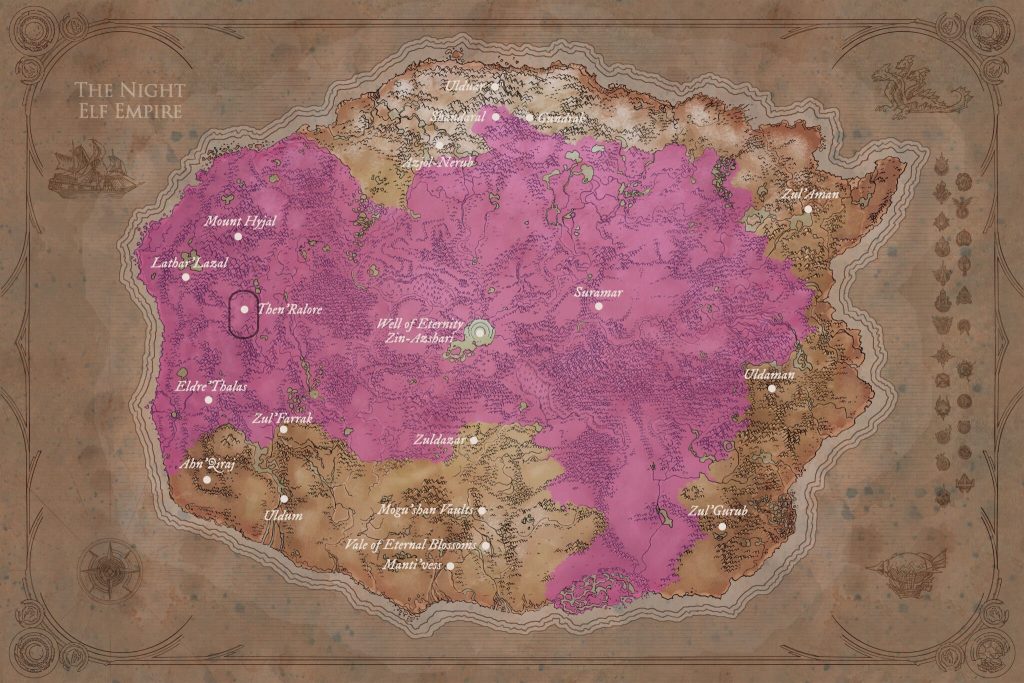
Millenia later, the orcs which had invaded Azeroth after leaving their homeland Draenor through the Dark Portal, arrived on Kalimdor. Under Thrall, the orcs of the New Horde were on the lookout for a new home.
They quickly found allies in the tauren — a humanoid race that roamed the wildlands of what once was central Kalimdor — by defeating their most threatening enemies: the centaurs.
From there on, Thrall made the Barrens the heart of the Horde’s new territory. After the happenings of the Second War in the Eastern Kingdoms and the destruction of their former homeland Draenor, the warchief of the Horde tried to lead his people into more peaceful times.
Additionally, Thrall tried to keep an unofficial truce between Horde and Alliance established after the Second War. But the Horde was not only Thrall alone.
The eternal conflict between the two factions had been molded into orc and human culture alike, and the faction conflict continued to smolder. One main reason behind that was Grommash Hellscream, leader of the Warsong clan. He sent his orcs to fight against the night elves on the border to Ashenvale, and had to take a fight against Cenarius himself as a result. Thanks to the corrupted blood of Mannoroth and the Burning Legion, the corrupted orcs defeated the demigod — that, however, didn’t support Thrall’s cause in the slightest. Later on, Thrall captured his once-loyal commander and freed him of the demonic corruption, but the incident still weighed heavily on the relationship between Alliance and Horde.
The Barrens: Heart of Conflict on Kalimdor
The history of the Barrens is heavily influenced by conflict itself. Ever since the Shattering — the result of conflict between Azeroth’s nature and the Burning Legion — multiple factions, races, and even individuals shaped what we know as the Barrens today.
The obvious conflict between Horde and Alliance still flares up to this day, but several other fights have been fought over time, as we can see through the revealed cards of Forged in the Barrens so far.
Let us take a look at the centaurs, for example:
As legends of Warcraft lore tell, these half-humanoid, half-horse creatures are direct descendants of Zaetar, son of Cenarius, and Princess Theradras, a gargantuan earth elemental.
Ever since their creation, they’ve been roaming the Barrens and its adjacent regions such as Mulgore, homeland of the tauren. As already said, the orcs under Thrall helped Cairne and his people to get rid of the pesky horsemen – but the remaining centaurs have been roaming free ever since. Looking at World of Warcraft, their interesting story is told through one of the longer quest chains in Classic WoW. During that quest, you will learn about the different centaur tribes, their intentions, and eventually visit Maraudon and Theradas herself.
The biggest threat to civil encampments of the Barrens, however, pose the quilboar:
Warcraft lore isn’t exactly sure where these creatures originated from in the first place. Legends tell that the quilboar are sons and daughters of Agamaggan, the Great Boar — one of the Wild Gods such as Cenarius.
During the War of the Ancients — the war that caused the Shattering and the creation of the Barrens —, Agamaggan fell in battle, and his blood was spilled all over the Barrens, and giant thorny vines grew where the blood touched the ground. Where Agamaggan’s body was buried over the millennia lies the Razorfen today, an enormous cluster of vines, home to the Razorfen quilboar.
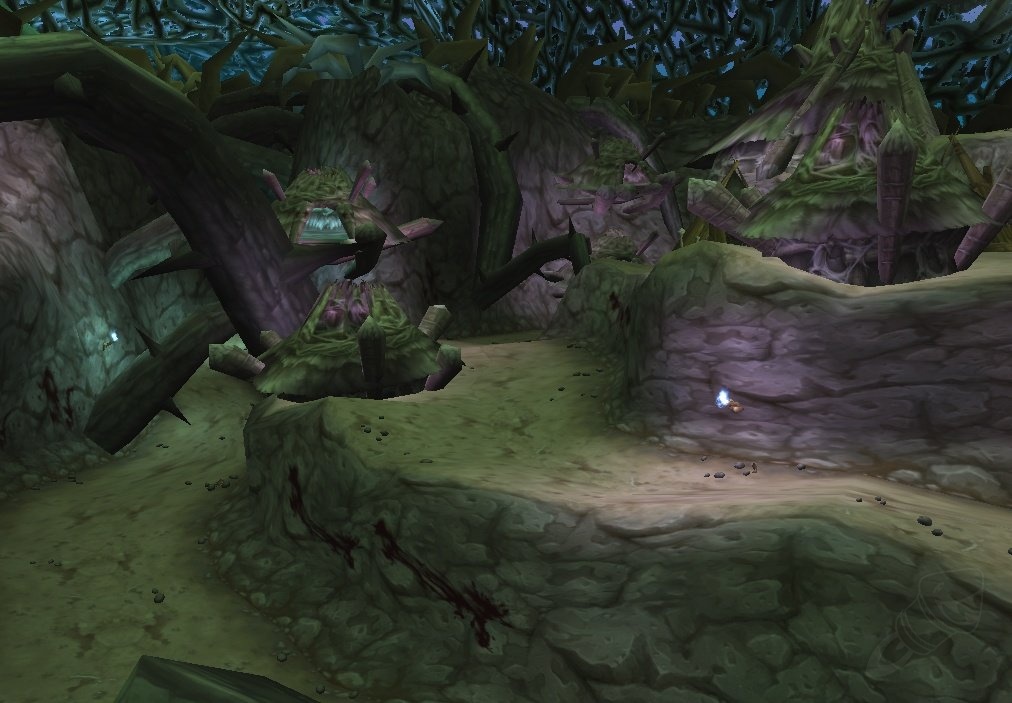
Their cultural principles are based on brute hierarchy and the worshipping of their god Agamaggan. They defend their homeland and the vines of the Barrens, which they see as a holy ground of their people, with incredible ferocity.
What really turned the quilboar against both the Alliance and the Horde, though, is the Scourge. Yes, you heard right!
The Scourge infiltration of the quilboar is the first recorded interaction of the Lich King’s army on Kalimdor — and it’s a true story classic. As already said, the porcupine people love, worship, and would love to bring their god Agamaggan back to life. That is why their leader, Charlga Razorflank, allied with the undead lich Amnennar of the Scourge to learn the secrets of necromancy. So if you were wondering why there are so many Deathrattle-related cards in Forged in the Barrens, this might just be the answer!
But back to Warcraft lore: A pact with the Scourge cannot be tolerated, of course, and in World of Warcraft, players are sent to the dungeons of Razorfen Downs and Razorfen Kraul to put an end to Charlga’s wrongdoings.
To reminisce about each and every single incredible storyline of the Barrens would go way beyond the scope of this article: The defensive Alliance outpost of Northwatch Hold, the seemingly neutral goblin seaport of Ratchet, the questionable dwarven excavation site Bael Modan, the harpy attack led by Serena Bloodfeather in the Northern Barrens — so many points of interest in the Barrens exist in World of Warcraft that tell their own compelling story.
Barrens History is World of Warcraft History
What World of Warcraft players, in particular, remember about the Barrens, though, is the incredible sense of adventure. Especially Horde players in the form of trolls and orcs entered the Barrens after starting out in the zone of Durotar, and what lied ahead of them was a mystical place full of dangerous, high-level threats.
The lack of information about the game especially in the Classic era led to massive use of what WoW players call the “Barrens chat”: Each WoW region had its own regional “General Chat” channel, and due to its wide level range, Barrens chat during prime time hours was flooded with all kinds of messages. For example, a lot of talks were had about Alliance players attacking the Horde’s main quest hub called Crossroads, as countless WoW players made their first experiences in PvP combat there.
But the most discussed topic in Barrens chat, without a doubt, revolved around a single question: “Where is Mankrik’s wife?”
In Crossroads, an orc called Mankrik provides the quest Lost in Battle and asks you to find his wife. And that was the whole quest.
As already said, sites like Wowhead didn’t really exist to today’s extent, let alone guide videos or articles. As you can imagine, everybody asked about the location of Mankrik’s wife. It quickly turned into a running gag while leveling in the Barrens, and later became one of the most prominent World of Warcraft memes ever. Oh, and by the way: We won’t spoil the story behind Mankrik’s wife. Just let us inform you that she made an appearance in WoW’s latest expansion, Shadowlands.
It is great to see that Team 5 decided to include the majority of Barrens’ iconic storylines. We can’t wait to see how this year’s story-driven inclusion of the Mercenaries will influence Hearthstone’s way of telling the tale of the Barrens and the conflict between Alliance and Horde within the Warcraft universe!

